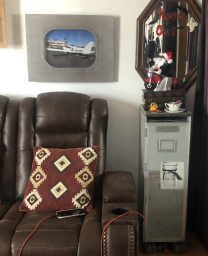
Liability
Civil Law: Tort (intentional torts and negligence) and Contract (the subject of another chapter)
Defamation: concerns false statements that harm someone's reputation
Libel: written defamation
Slander: oral defamation
Element: fact that a plaintiff must prove to win a lawsuit
Elements of Defamation:
1. Defamatory Statement: statement likely to harm another person's reputation
2. Falseness: statement must be false
3. Communicated: To at least one person other than the plaintiff
4. Injury: Plaintiff generally must show some injury
Slander per se: slander cases that involve false statements about sexual behavior, crimes, contagious diseases, and professional abilities - law assumes injury without requiring plaintiff to prove it
(libel too)
Opinion: cannot be proven true or false - generally a valid defense in a defamation suit
Public personalities: less protection from defamation (play in the open) - to win, a public figure or public official must prove actual malice by the defendant
New York Times Co. v. Sullivan
Actual malice: defendant in a defamation suit knew his or her statement was false, or acted with reckless disregard of the truth
Damages
Compensatory Damages: intended to restore the plaintiff to the position he was in before the defendant's conduct caused injury
Single recovery principle: requires a court to settle a legal case once and for all, by awarding a lump sum for past and future expenses
Punitive damages: punish the defendant for conduct that is extreme and outrageous - court must consider 3 guideposts:
1. reprehensibility of the defendant's conduct
2. ratio between harm suffered and the award (generally, not more than 9 times the compensatory award)
3. difference between punitive award and any civil penalties used in similar cases
Tort reform and Exxon Valdez
Economic damages: lost wages, medical expenses, and other measurable losses
Non-economic damages: pain and suffering and other losses that are difficult to measure
Business Torts
Tortious interference with a contract: occurs when a defendant deliberately harms a contractual relationship between two other parties
Four elements:
1. contract between plaintiff and a third party
2. defendant knew of contract
3. defendant improperly induced third party to breach contract or made performance of contract impossible
4. injury to plaintiff
Intrusion: (into someone's private life) tort if a reasonable person would find it offensive
Commercial exploitation: prohibits the unauthorized use of another person's likeness or voice for business purposes
NEGLIGENCE
Harm that arises by accident - unintentional
Palsgraf v. Long Island Railroad
Special duty: Landowner's Liability
- lowest liability - trespassing adults - trespasser is anyone on property without consent - landowner liable only for intentionally injuring him or some other gross misconduct
- midlevel liability - trespassing children - if there is some manmade thing on land that may be reasonably expected to attract children - landowner probably liable for any harm
- higher liability - licensee - person on property for her own purposes, but with the owner's permission - eg social guest - entitled to warning of hidden dangers that owner knows about (hidden dangers are NOT obvious ones!)
- highest liability - Invitee - person who has a right to be on property because it is a public place or a business open to the public - owner has a duty of reasonable care - owner must conduct inspections of property to make sure no condition is becoming dangerous
Special duty: Professionals
while on the job must act as a reasonable person in her profession
Special duty: Hiring and retention
companies can be liable for hiring or retaining violent employees
Joint and several liability: even if more than one defendant is found negligent, the victorious plaintiff can collect the entire judgment from any defendant found negligent
Defenses
Assumption of the risk: a person who voluntarily enters a situation of obvious danger cannot complain if she is injured
Contributory negligence: plaintiff who is even slightly negligent recovers nothing
Comparative negligence: plaintiff may generally recover even if she is partially responsible
Strict Liability
A high level of liability assumed by people or corporations who engage in activities that are very dangerous
Defective products: generally lead to strict liability
Ultra-hazardous activities: defendant engaging in such acts is virtually always liable for resulting harm
New Jersey Department of Environmental Protection v. Alden Leeds, Inc
Res judicata: literally "a matter judged" - a matter may not, generally, be relitigated once it has been judged on the merits
Common law: law made by judges
Constitutional law: law made by citizens
Statutory law: law made by legislators
Regulations: laws adopted by administrative agencies
GARA
General Aviation Revitalization Act (GARA) 1994 - summary - federal 18-year statute of repose for FAA-certified general aviation aircraft having less than 20 seats
- General Aviation(GA) Industry declined in the 1980s and 1990s.
- Growing liability insurance costs, driving prices beyond the market
- Surge in Student Pilots
- Early 80s proposed elimination of GI Bill Funding of Private Pilots Certificate
- Would have been spread out over MANY more years if no fear of discontinuance!
- Underwriters refused to sell product liability insurance to GA due to:
- Long Life expectancy
- Higher Fatality Rate
- US Legal System Changes - Rule of Strict Liability
- Companies went out of business due to skyrocketing prices, and a market that could not handle to buy the planes for the prices they needed to break even.
- Cessna Aircraft Co.
- World’s highest volume aircraft producer
- First ever loss in 1983
- Suspended ALL prop production in 1986 - except the 208 Caravan for commercial operations
- Specifically stated that insurance was the reason they stopped selling single engine prop aircraft.
- Piper Aircraft Co.
- In and out of bankruptcy, under various names.
- Suspended or eliminated long-running and popular lines
- Piper Super Cub
- Piper PA-32 ”Cherokee 6”
- Beech Aircraft Co.
- Acquired by Raytheon Corp.
- Shifted from GA propeller aircraft canceling all but 2 lines
- Shifted to
- Pro operated corporate turboprops
- Small military
- Commercial aircraft
- Opponents:
- Public-interest/consumer advocacy groups - public citizen
- Association of Trial Lawyers of America
- Supporters:
- Sen Nancy Kassebaum(R-KS) - KS is leading producer of GA aircraft
- General Aviation Manufacturers Association (GAMA)
- International Association of Machinists and Aerospace Workers Union (IAM)/(IAMAW)
- Aircraft Owners & Pilots Association (AOPA)
- GARA
- Was passed by Congress in 1994
- Signed into law on 17 Aug 1994 by President Clinton
- Is a statute of repose
- shields manufacturers of liability after 18 years
- even if manufacturer negligence was cause!
- Exceptions:
- Manufacturer withheld or misrepresented info from FAA, if directly related to cause of accident
- If victim is a passenger on an Air Ambulance/Medical Flight
- otherwise-exempt aircraft killed or injured someone NOT aboard the aircraft
- suit over Written Warranty
- Cessna Aircraft Co.
- 1994 - Resumed Limited Propeller production of:
- 172
- 182
- 206
- Stated that it was in response to the passage of GARA and keeping with his “Promise”
- Did Not resume productions of more efficient/high performance lines
- Continued focus on business jets and turboprop aircraft
- Piper Aircraft Co.
- Continued troubles, BUT still produced the “80s survivors”
- Restored the PA-32 line in 1995
- Raytheon Aircraft Co.
- renamed from Beechcraft Corp.
- Continued production of Survivors:
- Beech Bonanza
- Beech Baron
- Never resumed production of other lines cut
- Attorneys have gone after a broader swath of the industry as alternative defendants to the manufacturers.
- Segments include (but not limited to)
- Parts manufacturers
- Maintenance shops
- Flight instructors
- Flight schools
- Charter pilots
- Aircraft owners and their assets
- GA safer as a result
- GARA cited by many
- Shift from private flying to professionally flown aircraft in GA sector
- Reduction in flight hours of GA aircraft due to other economic factors also suspected
- GAO estimated over 25,000 new jobs created due to GARA passing
- Product liability limits motivate safer behavior by consumers
General Aviation Manufacturers Association (GAMA)
General Accounting Office (GAO) - investigative arm of Congress
Litigation procedures: if you don't show up on time to play, you lose by default!
Summons and Complaint: usually handed to you by a process server
Answer: filed with the Court within typically 20 days
Discovery: before trial - to find out what the other side's case is all about and to learn about your defenses - many types:
- written interrogatories: questions to be answered in writing
- depositions: sworn testimony by prospective witnesses
- examination of documents and other physical evidence - by a motion to produce
Motions: alert the court to an issue that may be properly resolved at that point, argue the moving party's view of the matter, and ask the court to rule on the issue - opposing party may respond with counterarguments - eg motion for summary judgment, motion to dismiss (these may dispose of entire case)
Trial: judge or jury
Jury: listens to evidence presented by both sides - judge instructs jury on applicable law - jury retires to jury room to debate which version is more believable by preponderance of the evidence - if decision is not legally flawed judge will enter decision as judgment
Appeals: may follow
Alternative Dispute Resolution
Arbitration
Mediation
Vanessa Bryant Has Filed A Lawsuit Against The Helicopter Company After Kobe Bryant's Crash
Contact Me
Sarah Nilsson, J.D., Ph.D., MAS
602 561 8665
You can also fill out my
Get Social with Me
Legal Disclaimer
The information on this website is for EDUCATIONAL purposes only and DOES NOT constitute legal advice.
While the author of this website is an attorney, she is not YOUR attorney, nor are you her client, until you enter into a written agreement with Nilsson Law, PLLC to provide legal services.
In no event shall Sarah Nilsson be liable for any special, indirect, or consequential damages relating to this material, for any use of this website, or for any other hyperlinked website.
Steward of
I endorse the following products
KENNON (sun shields)









